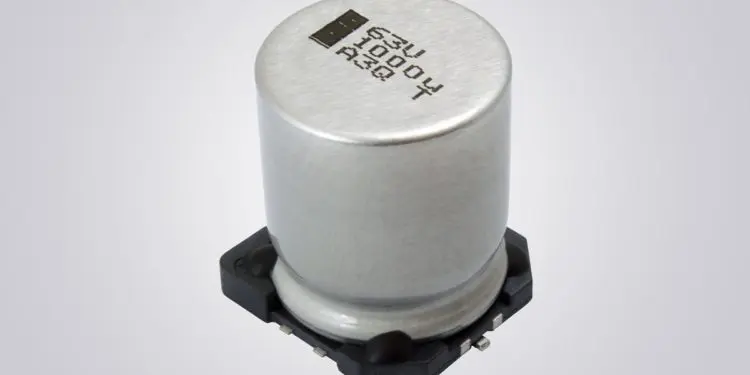Vishay Intertechnology, Inc. introduced two new series of Automotive Grade, surface-mount aluminum electrolytic capacitors that combine high voltages up to 450 V with operating temperatures up to +125 °C and useful life up to 6,000 hours for automotive and industrial applications.
The high voltage range of Vishay BCcomponents 152 CME and 192 CTX series capacitors provides designers with greater design flexibility, while their high temperature capabilities and extended useful life increase reliability for demanding applications in harsh environments. As polarized aluminum electrolytic capacitors with a non-solid electrolyte, the AEC-Q200 qualified devices are suited for smoothing, filtering, and buffering in power supplies and portable chargers for electric vehicles and industrial equipment.
The 152 CME and 192 CTX series offer capacitance values from 2.2 µF to 33 µF in seven case sizes ranging from 10 mm by 10 mm by 10 mm to 18 mm by 18 mm by 21 mm. The RoHS-compliant capacitors offer charge- and discharge-proof performance with no peak current limitation, allow for lead (Pb)-free reflow soldering in accordance with JEDEC J-STD-020, and offer vibration-proof performance in 4- and 6-pin versions.
Device Specification Table:
| Part number | 152 CME | 192 CTX |
| Case size (L x W x H in mm) | 10 x 10 x 10 to 18 x 18 x 21 | |
| Capacitance range | 2.2 µF to 33 µF | |
| Tolerance | ± 20 % | |
| Rated voltage range | 400 V to 450 V | 400 V |
| Temperature range | -40 °C to +105 °C | -40 °C to +125 °C |
| Useful life | 6000 hours (at +105 °C) | 2500 hours (at +125 °C) |
| Shelf life at 0 V | 1000 hours (at +105 °C) | 1000 hours (at +125 °C) |
| Sectional specification | IEC 60384-18 / CECC 32300 | |
| Climatic category IEC 60068 | 40 / 105 / 56 |
Samples and production quantities of the 152 CME and 192 CTX series are available now, with lead times of six to 10 weeks.































